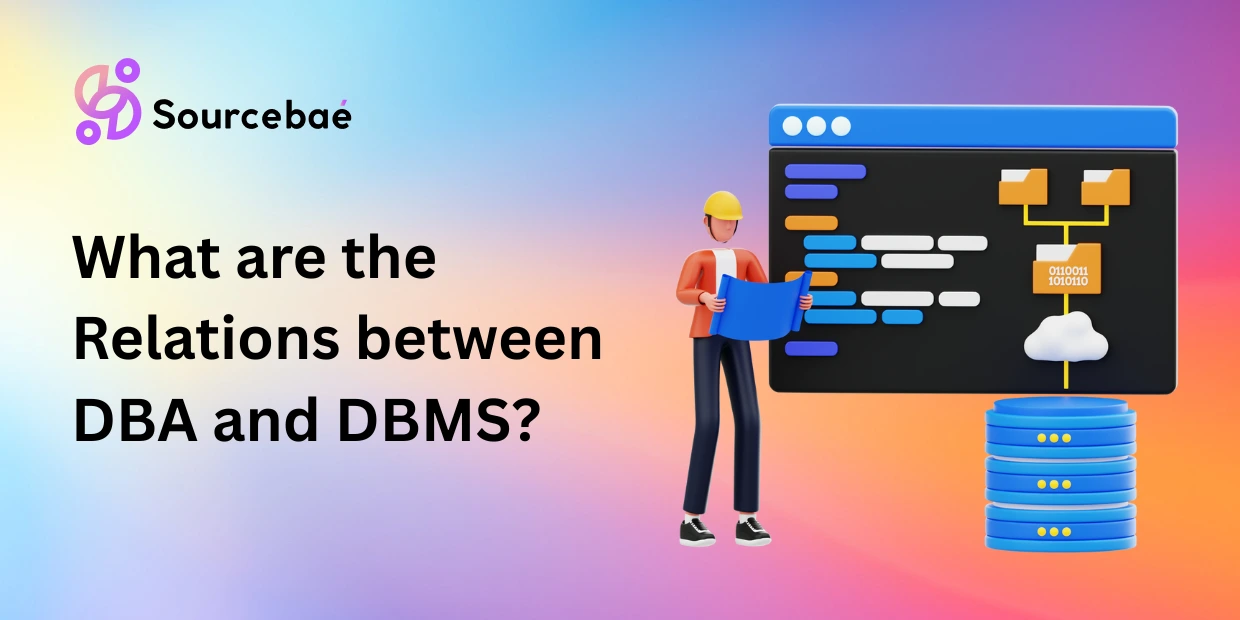In the realm of data management, the terms “Database Administrator” (DBA) and “Database Management System” (DBMS) often intertwine. These two entities are like the dynamic duo of the digital world, working hand in hand to ensure that databases run seamlessly and efficiently. But what are the relations between DBA and DBMS? How do they collaborate to maintain the integrity and performance of databases? In this comprehensive article, we will delve deep into the world of DBAs and DBMS, exploring their roles, responsibilities, and the intricate connections that make them essential to the functioning of modern data-driven organizations.
The Fundamentals of DBA and DBMS
DBA – The Guardian of Databases
Database Administrators, commonly referred to as DBAs, are the unsung heroes of the data world. They are responsible for the overall management of databases, ensuring that data remains secure, accessible, and organized. Here are some key aspects of a DBA’s role:
- Data Security: DBAs implement robust security measures to safeguard sensitive data from unauthorized access or breaches. They establish authentication protocols and encryption mechanisms to protect data integrity.
- Performance Optimization: They fine-tune database systems to maximize efficiency. This includes optimizing queries, managing indexes, and monitoring resource utilization.
- Backup and Recovery: DBAs create backup strategies to prevent data loss in case of system failures. They also devise recovery plans to minimize downtime in the event of a catastrophe.
- Database Design: They participate in database design and schema development to ensure that databases are structured logically and can handle data efficiently.
- User Management: DBAs manage user accounts, permissions, and access rights, granting or revoking privileges as needed.
DBMS – The Backbone of Data Management
On the other side of the equation, we have Database Management Systems, or DBMS. DBMS is a software suite responsible for the storage, retrieval, and manipulation of data within a database. It serves as the bridge between end-users and the underlying data. Here’s what DBMS brings to the table:
- Data Storage: DBMS handles the physical storage of data on disk or in memory. It optimizes storage structures for quick data retrieval.
- Query Processing: It processes SQL queries from users or applications, translating them into low-level operations for data retrieval.
- Concurrency Control: DBMS manages concurrent access to the database, ensuring that multiple users can work with the data simultaneously without conflicts.
- Transaction Management: It supports the ACID properties (Atomicity, Consistency, Isolation, Durability) to ensure data integrity during transactions.
- Data Security: DBMS enforces access controls and authentication mechanisms, working hand in hand with DBAs to protect data.
The Symbiotic Relationship
Now that we understand the individual roles of DBAs and DBMS, let’s explore how their relationship is symbiotic:
- Collaborative Maintenance: DBAs and DBMS collaborate to maintain the database. DBAs rely on DBMS tools to perform tasks like backup, recovery, and performance monitoring.
- Optimization: DBAs use DBMS features to optimize database performance. They can tweak SQL queries or configure caching mechanisms within the DBMS for better speed.
- Security: The DBA-DBMS partnership ensures data security. DBAs define access policies, and DBMS enforces them, making it a robust defense against data breaches.
- Problem Resolution: When issues arise, DBAs and DBMS work together to identify and resolve them. DBMS logs and diagnostic tools assist DBAs in troubleshooting.
- Upgrades and Patches: DBAs collaborate with DBMS vendors to implement updates and patches, ensuring that the database remains secure and up to date.
FAQs (Frequently Asked Questions)
Q: Are DBAs and DBMS the same thing?
A: No, they are not the same. DBAs are human professionals responsible for managing databases, while DBMS is software used to store, retrieve, and manage data within those databases.
Q: Can a DBMS function without a DBA?
A: Technically, yes, but it’s highly discouraged. While a DBMS can perform basic tasks on its own, a DBA’s expertise is crucial for optimizing performance, ensuring security, and resolving complex issues.
Q: What skills should a DBA possess?
A: A DBA should have strong knowledge of database systems, SQL, data modeling, and system administration. Communication and problem-solving skills are also essential.
Q: How do DBAs and DBMS ensure data recovery?
A: DBAs create backup and recovery plans, while DBMS provides mechanisms for creating and restoring backups. Together, they ensure data can be recovered in case of data loss.
Q: Is DBA work limited to specific industries?
A: No, DBAs are needed in various industries, including healthcare, finance, e-commerce, and more, wherever databases are used to store and manage critical data.
Q: What is the future of DBAs in the age of automation?
A: While automation is growing, DBAs will still be needed for complex tasks, strategy planning, and ensuring databases align with business objectives.
Conclusion
In the world of data management, the relations between DBA and DBMS are akin to a well-orchestrated symphony. DBAs, the guardians of data integrity, and DBMS, the silent backbone of data storage and retrieval, work together seamlessly to keep the digital world spinning. Understanding the synergy between these two entities is crucial for anyone interested in harnessing the power of data. So, the next time you interact with a database, remember the unsung heroes behind the scenes, the DBAs, and the powerful software that aids them, the DBMS.
If you’re a developer aiming to land a job at top tech companies, Sourcebae is here to make it easier for you. Simply create your profile, share your details, and let us take care of the rest—from matching you with the right opportunities to guiding you through the hiring process.
4o





